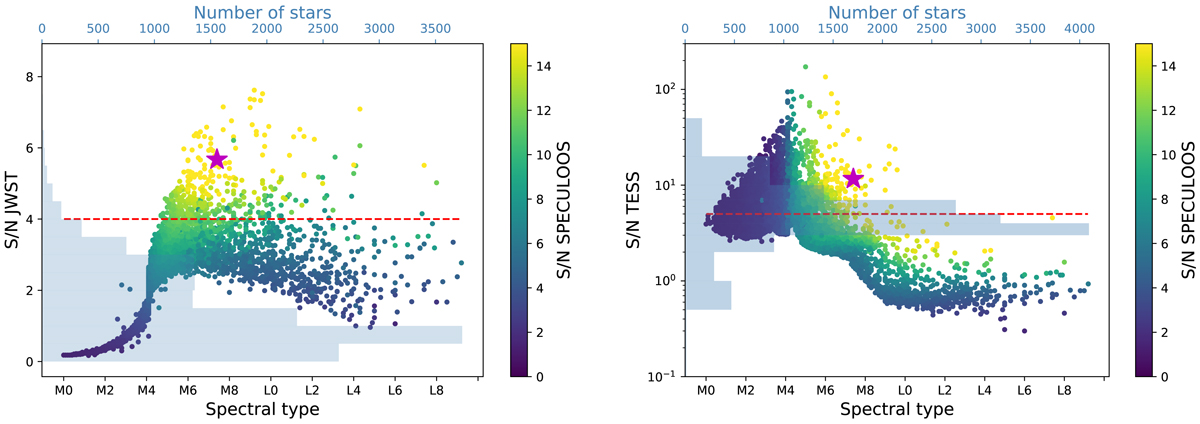Fig. 3.

SPECULOOS programme selection: Left: estimated S/N in transmission spectroscopy with JWST/NIRSPEC (assuming an ‘Earth-like’ planet, 200 h of JWST/NIRSPEC time, and a spectral sampling of 100 nm) as a function of spectral type for the 14 164 M- and L-dwarfs within 40 pc. TRAPPIST-1 is shown as a magenta star. Red dashed line: S/N = 4, used to select Programme 1 targets. Colour coding: estimated S/N for detecting a single transit of an Earth-sized planet with one telescope of the SPECULOOS network, with yellow points representing a S/N ≥ 15. Light-blue histogram: distribution of all objects and their corresponding S/N. Right: estimated S/N for TESS to detect an Earth-sized planet with an irradiation four times larger than Earth. Colour coding: estimated S/N for detecting the transit of an Earth-sized planet with the SPECULOOS network, with yellow points representing a S/N ≥ 15. Red dashed line: S/N = 5, used to select Programme 2 targets. Light-blue histogram: distribution of all objects and their corresponding S/N.
Current usage metrics show cumulative count of Article Views (full-text article views including HTML views, PDF and ePub downloads, according to the available data) and Abstracts Views on Vision4Press platform.
Data correspond to usage on the plateform after 2015. The current usage metrics is available 48-96 hours after online publication and is updated daily on week days.
Initial download of the metrics may take a while.


